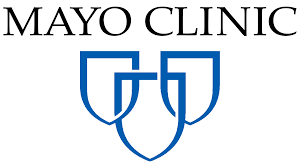Basal Cell Carcinoma
Basal Cell Carcinoma
An Unseen Epidemic
Amid the bustle of our daily lives, a silent threat lurks just beneath the surface. It’s the most common form of skin cancer: Basal Cell Carcinoma (BCC). More than four million cases are diagnosed in the U.S. each year, often presenting as a seemingly innocuous bump, patch, or growth.
BCC starts in the basal cells — a type of cell within the skin that produces new skin cells as old ones die off. While BCCs are primarily caused by prolonged exposure to ultraviolet (UV) radiation from the sun or indoor tanning beds, other factors like a weakened immune system, exposure to certain chemicals, or a history of skin cancer can also play a role.
Basal cell carcinomas can look different from person to person. They often appear as a shiny bump or nodule that’s pearly or translucent. Some might look like a red patch that’s somewhat itchy, a white, waxy scar, or a bleeding or scabbing sore that heals and returns. They often arise on parts of the skin that are frequently exposed to the sun, such as the face and neck, but they can occur anywhere on the body.
The good news is that when caught early, BCC is highly treatable. Various treatments are available, including simple surgical removal, Mohs surgery (where thin layers of cancer-containing skin are progressively removed), radiation therapy, and even topical or oral medications for certain cases.
However, while treatment is often successful, prevention is key. This includes protective clothing, sunglasses, hats, and, of course, sunscreen with broad-spectrum (UVA/UVB) protection. It’s crucial to remember that UV radiation can still damage skin even on cloudy days, so daily protection is important.
Lastly, regular self-examinations and professional skin exams can catch BCC early. Any new, unusual, or changing skin growths should be evaluated by a dermatologist.
The journey to a more confident you starts with one decision. That is the decision to get treated, why wait Book Online today? If you’re on the fence or have questions brewing, remember: We at Sullivan Dermatology are always here to help.
Videos
Basal Cell Carcinoma
Basal cell carcinoma (BCC) is the most common type of skin cancer. It begins in the basal cells—a type of cell within the skin that produces new skin cells as old ones die off. While it typically occurs in areas of the skin exposed to the sun, like the face and neck, it can happen anywhere on the body. The differences between actinic keratosis vs basal cell carcinoma can be subtle but important for management and treatment for basal cell carcinoma.
Basal cell carcinoma often appears as a waxy bump, a flesh-colored or brown scar-like lesion, or a bleeding or scabbing sore that heals and returns. The key to successful treatment for basal cell carcinoma is early detection. Therefore, any new or changing skin lesions, particularly in sun-exposed areas, should be evaluated by a healthcare professional.
The main cause of basal cell carcinoma is long-term exposure to ultraviolet (UV) radiation from the sun. Use of tanning beds also increases the risk. However, other factors, such as a weakened immune system, exposure to radiation, and rare genetic syndromes, can also increase the risk of developing this skin cancer.
A common myth is that basal cell carcinoma isn’t real cancer because it’s usually slow-growing and rarely metastasizes. However, if left untreated, it can cause significant disfigurement and complications. Another myth is that only fair-skinned individuals get BCC. While it’s true that it’s more common in people with lighter skin, BCC can occur in anyone, regardless of skin color.
When it comes to treatment for basal cell carcinoma, options depend on the size, location, and extent of the cancer, as well as the patient’s overall health. Methods include surgical removal (excision), Mohs surgery (for larger, recurring, or critical-area cancers), or non-surgical treatments like topical chemotherapy, radiation therapy, or immune response modifiers.
When evaluating skin lesions, one common question is the difference between actinic keratosis vs basal cell carcinoma. Actinic keratosis is a precancerous skin lesion that might progress to squamous cell carcinoma, another type of skin cancer. They can look similar, but actinic keratoses are usually smaller, red, scaly patches, whereas basal cell carcinomas are typically larger, pearly bumps or ulcerative sores. Dermatologists can distinguish between them via a skin biopsy.
In conclusion, recognizing the signs of basal cell carcinoma and understanding the difference between actinic keratosis vs basal cell carcinoma is crucial for early detection and effective treatment for basal cell carcinoma. Remember to protect your skin from the sun and to have any suspicious skin lesions checked by a healthcare provider. Even though BCC is slow-growing and treatable, it is still a serious condition that requires prompt attention and care.
For More Information:
Basal Cell Carcinoma or Basal Cell Carcinoma (WebMD).FAQs About Basal Cell Carcinoma
BCC is the most common type of skin cancer, originating in the basal cells which produce new skin cells.
Prolonged exposure to ultraviolet (UV) radiation from the sun or indoor tanning beds is the primary cause of BCC. Other risk factors include a weakened immune system and exposure to certain chemicals.
BCC can appear as a shiny, pearly, or translucent bump or nodule, an itchy red patch, a white waxy scar, or a bleeding or scabbing sore that heals and returns.
Treatment options for BCC include surgical removal, Mohs surgery, radiation therapy, and in certain cases, topical or oral medications.
BCC is slow-growing and rarely spreads to other parts of the body. However, if left untreated, it can grow deep beneath the skin and into the underlying tissue and bone.
Prevention strategies include avoiding the sun during peak hours, wearing protective clothing and broad-spectrum sunscreen, avoiding indoor tanning, and regular skin examinations.
It's recommended to have a professional skin examination yearly. However, if you're at a higher risk due to factors like fair skin or a family history of skin cancer, you may need more frequent checks.
Yes, when caught early, BCC is highly curable.
Yes, having one BCC increases the risk of developing a new one in the future, hence regular skin checks are crucial.
Yes, fair-skinned individuals, those with a family history of BCC, individuals with prolonged UV exposure, or those with a weakened immune system are more susceptible to BCC.





